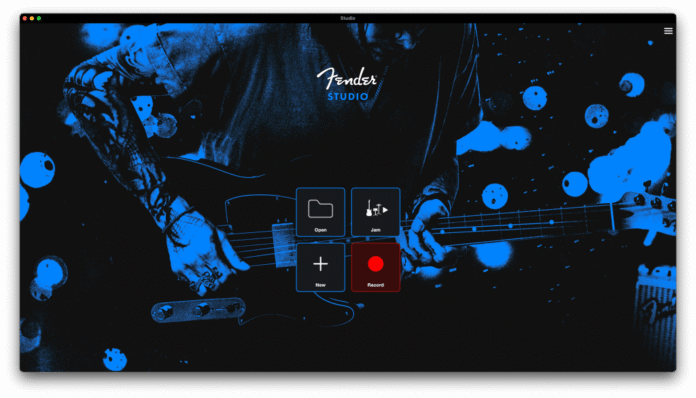At a look
Professional’s Ranking
Execs
- Intuitive and straightforward to make use of
- Doubles as each a 16-track recorder and guitar amp sim
- Free and cross-platform (PCs, telephones, and tablets)
- Play alongside songs to apply with
- Instant report choice
Cons
- No loop recording or punch in/out
- No MIDI or digital devices
Our Verdict
Fender’s cross-platform Studio is hyper-focused on straightforward recording and the guitarist through an built-in amp simulator. It’s a helpful, albeit restricted app for any of these pesky guit-fiddlers in your life.
Value When Reviewed
This worth will present the geolocated pricing textual content for product undefined
Greatest Pricing At present
Value When Reviewed
Free
Greatest Costs At present: Fender Studio
Fender Studio is a cross-platform (Android, iOS, Home windows, macOS) mixture 16-track audio recorder/guitar amplifier simulation app. Plug your guitar into your interface or gadget, hearth up Studio, begin a’pluckin and report the outcomes. It’s very cool and rock-solid and helpful for apply and capturing concepts. Nonetheless, it’s lacking fairly a couple of options whose absence may need you trying to the corporate’s way more succesful (and way more advanced) Studio One.
What, an upsell app from a significant vendor? Inform me it ain’t so. All joking apart, as a free amp sim that information, Fender Studio is implausible.
Fender Studio helps recording and taking part in again as much as 16 tracks of audio and features a bunch of the corporate’s results (FXs) to make all of it sound good. Most saliently, there are what are referred to as amp sims, i.e. results that simulate the sound of an actual guitar amplifier.
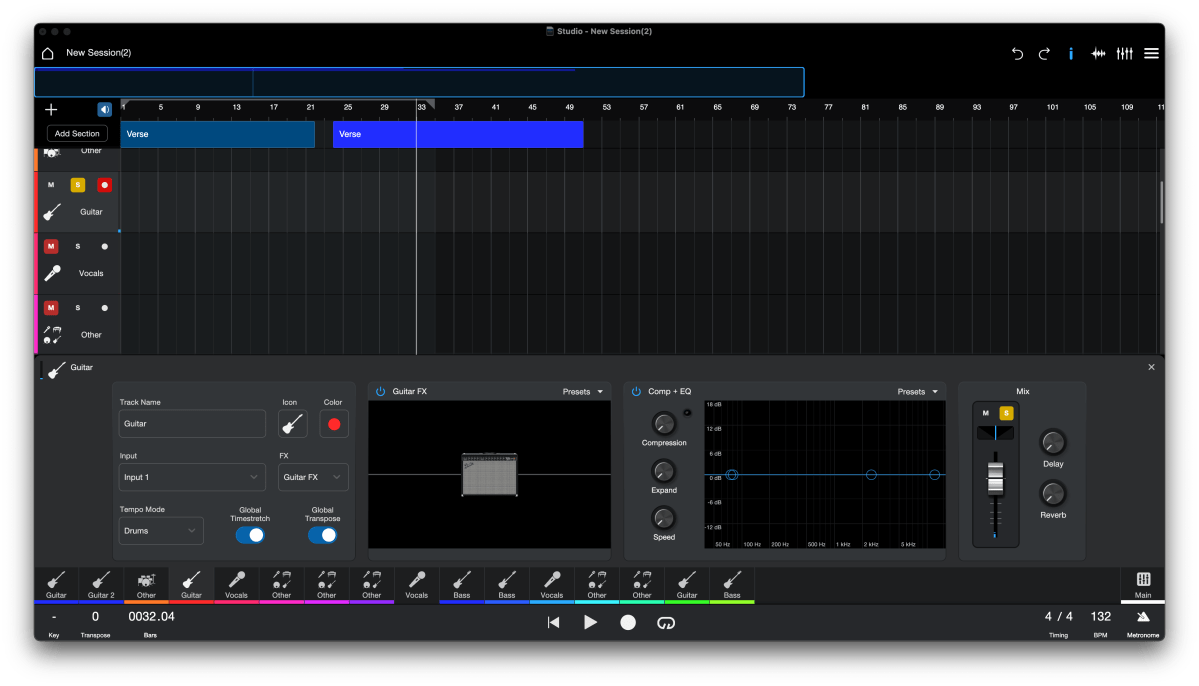
These results, together with the amp sims, will be utilized to the enter sign. You hear them as you play, although they aren’t printed to the monitor if you report. Most DAWs solely apply or allow you to hear FX publish recording.
FX being audible on enter (with monitoring turned on) is what permits Studio to operate as a Fender-centric amp sim (guitar and bass), that’s, an app that turns your gadget right into a digital guitar amp. Very like Native Instrument’s Guitar Rig, IK Multimedia’s Amplitude, Constructive Grid’s BIAS, and a number of others.
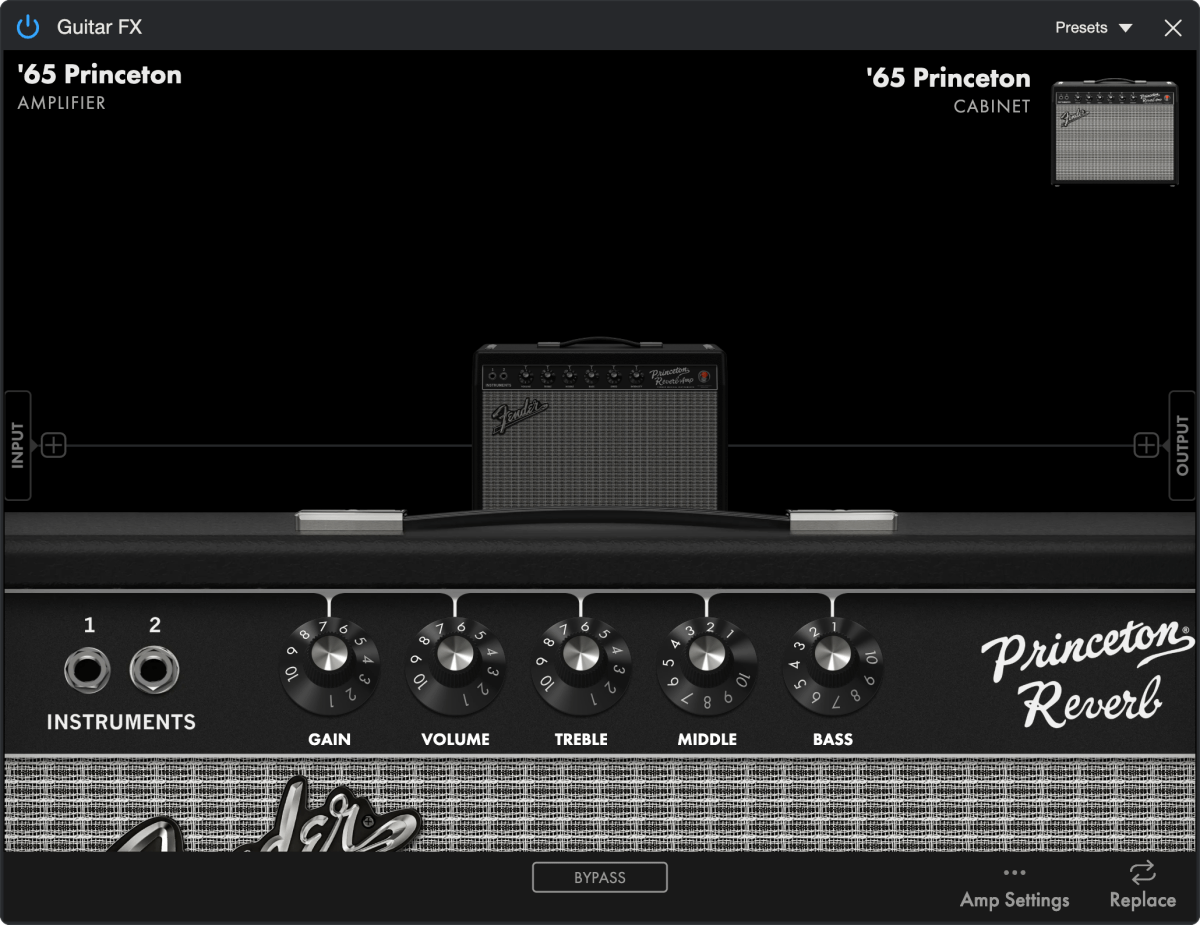
As to the recording portion of this system, it options the aforementioned 16 audio tracks plus a surprisingly succesful set of clip enhancing options: reduce, paste, delete, break up, begin/finish factors, transpose, tempo, achieve, and crossfades. These are non-destructive; the underlying audio materials stays unchanged.
There’s no low degree enhancing of audio resembling transient quantizing, however you possibly can break up audio clips and drag them to the correct location/beat, with or with out snap. Snap roughly follows the zoom degree, although it’s extra granular than the divisions on the time bar which max out at 1/16 notes.
Two very good options are international transpose and international tempo. These allow you to shift the pitch of a whole undertaking, in addition to gradual it down, or velocity it up.
You may as well resolve tempo on a clip by clip foundation which is able to observe the worldwide settings, or, as famous, change their playback velocity independently. In case you import an audio file, you’ll have to outline its tempo earlier than it can observe the worldwide one.
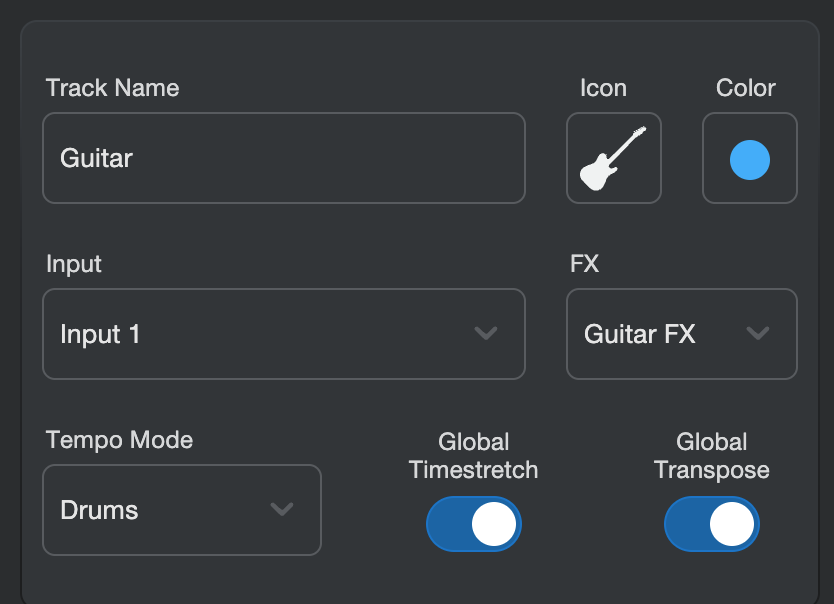
One factor I actually, actually like about Fender Studio is that you just by no means have to save lots of. All modifications are saved as a matter after all (as with most gadget apps). I hoped for infinite undo or redo à la Common Audio Luna, however undo/redo is proscribed to the present session like with most DAWs. In fact, this additionally means you possibly can’t revert to a beforehand save model and there is a matter that I found the onerous method.
In case you take away Fender Studio utilizing the macOS app retailer, it deletes all of your periods and knowledge. That is an Apple factor and it may very well be a bummer if you happen to’re caught unaware. If I had been you, I’d recurrently export tasks to a secure location, and/or copy the contents of this folder: ~Library/Containers/Studio/Information/Studio/Paperwork/Periods someplace else earlier than eradicating this system utilizing the app retailer.
As for exporting, you possibly can’t simply choose a clip–say that killer solo you simply recorded–and export/share it, although you possibly can entry them manually within the folder listed above. You’ll be able to, nonetheless, export each audio mixdowns and DAWproject information. The latter comprise the stems, i.e. separate tracks, in addition to audio information, plus much more that can be utilized to simply reconstruct a undertaking in one other DAW that helps the format.
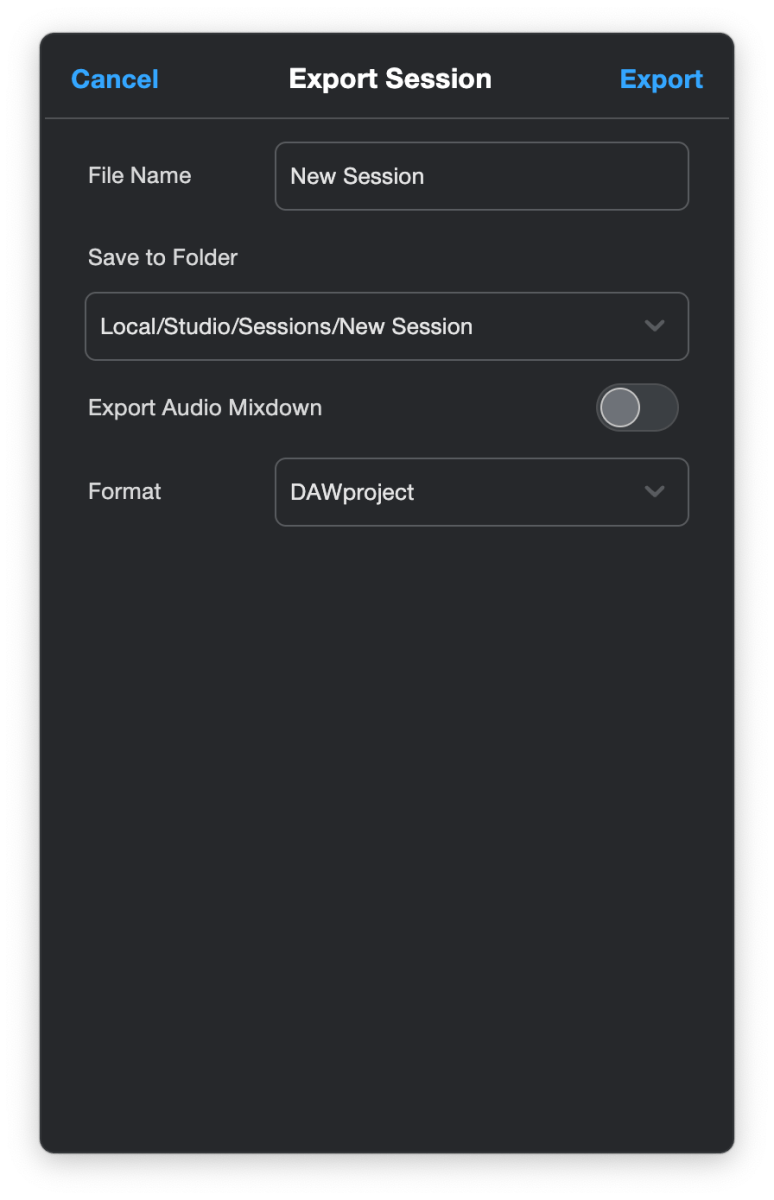
Unsurprisingly, DAWproject is supported by Fender’s personal Studio One, in addition to Steinberg Cubase 14, Cubasis 14, and Bitwig. S(adly, for me, not Ableton Reside.) However Steinberg’s help usually drags the remainder of the business with it, so there’s hope that different distributors will quickly undertake this exceedingly helpful format.
As to importing, you possibly can drag and drop an audio file to a monitor to play together with it. I attempted each wave and MP3 codecs and so they had been imported efficiently, in addition to in a short time. Notice that they’re transformed to FLAC and saved with the undertaking. Good. However once more, you will need to outline a tempo earlier than its playback velocity will change together with the opposite clips in accordance with the worldwide tempo.
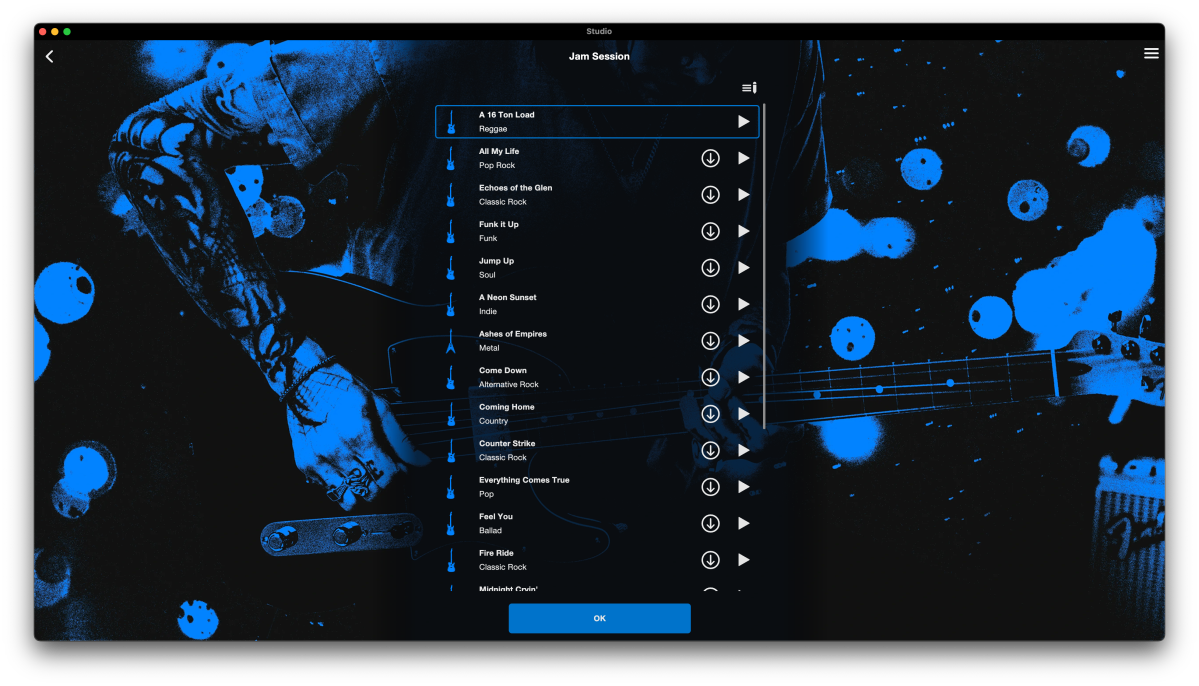
Fender Studio presents Jam tracks, that are multi-track undertaking information overlaying varied musical types that you could play together with. Being multi-track means that you can mute varied devices, although you possibly can’t solo them. To concentrate on one instrument, you will need to manually mute all of the others. Drudgery. Then again, they do reply to each international tempo and international transpose. Yay!
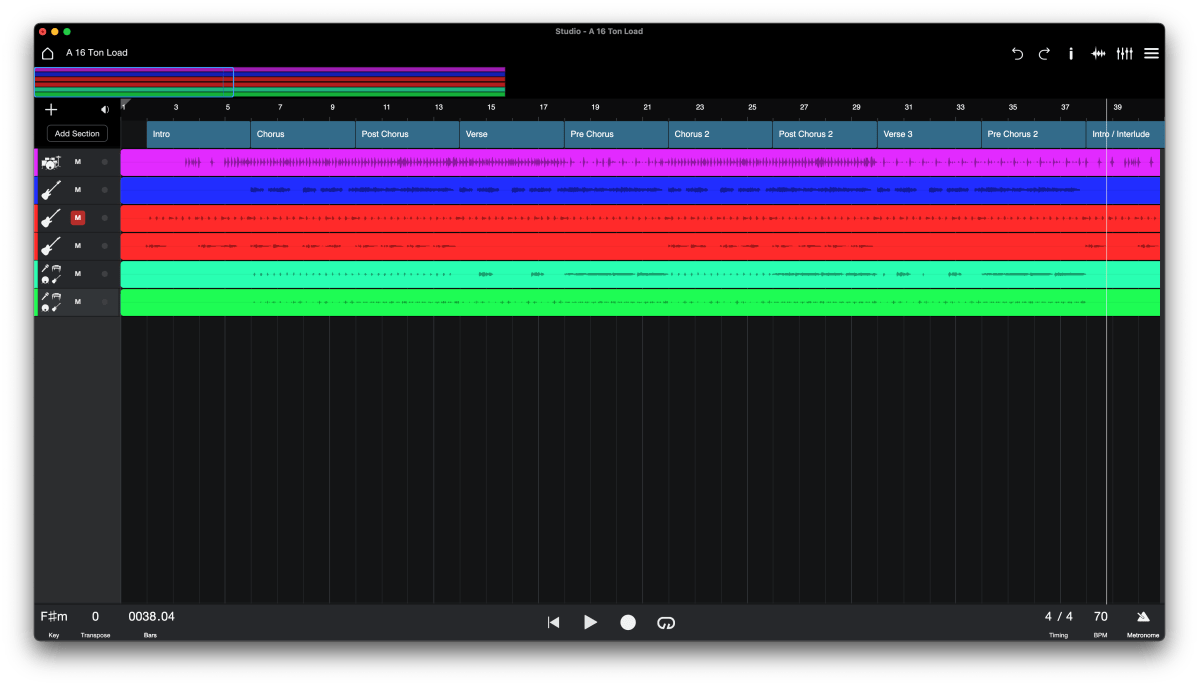
One other tremendous good contact in Fender Studio is the flexibility to get recording in a rush. “Document” is among the 4 selections on the house display and it opens this system and begins recording instantly. Candy.
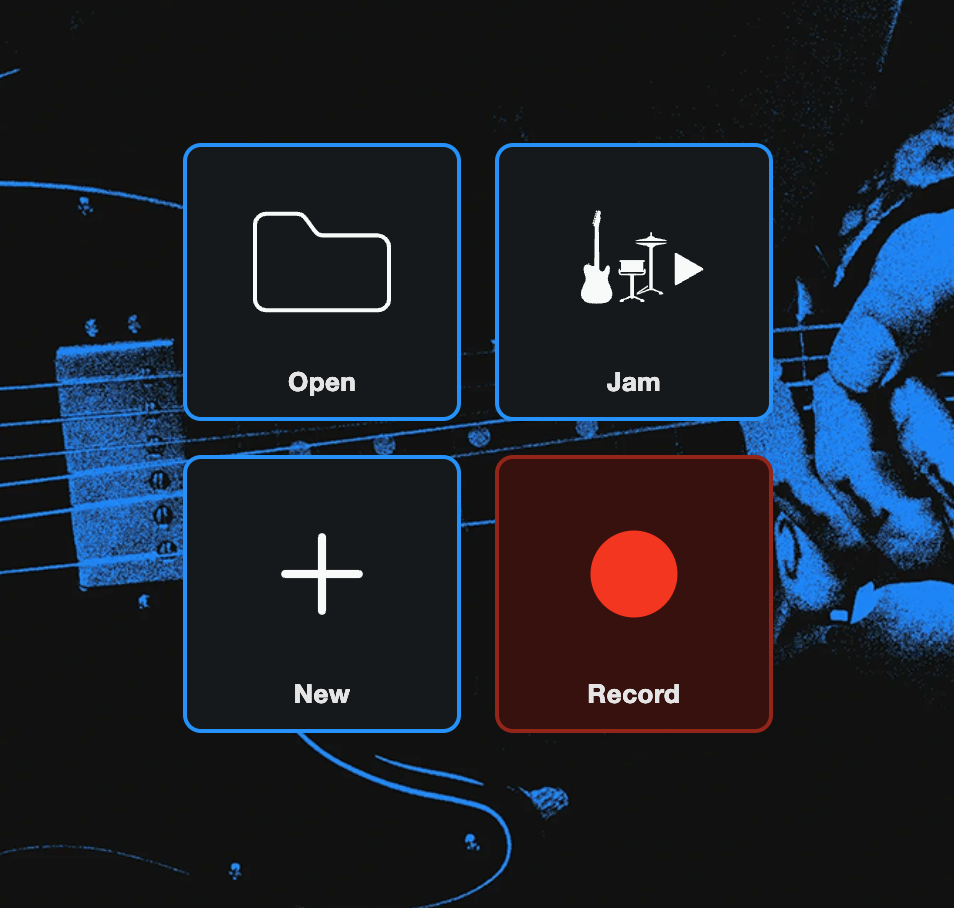
Enter 1 is chosen by default, the place I’d prefer to see all of them monitored, nevertheless it’s darn near my dream of a program that optionally begins recording audio and MIDI on launch to seize these sometimes ephemeral inspirations. So much nearer than anything I’ve seen. Good on ya’, Fender.
What’s lacking from Fender Studio
In case you browse DAW-user commentary on-line, it appears everybody and their mom has a must have function that the topic DAW lacks. They usually’re infrequently the identical. Options whose absence would possibly bitter the deal for some are: loop recording, punch-in/out (there’s a count-off), MIDI help, help for FX or digital instrument plugins, straightforward clip/monitor export, tempo and time signature tracks, audio enhancing and quantization (there may be that very granular clip break up/snap), automation (apart from achieve settings and crossfades for clips) and folder tracks.
I’m positive there are others, however from my perspective, these are the biggies with loop recording/punch being those I believe it actually wants. Ought to Presonus/Fender hearken to me, undo ought to erase solely the final looped take–not all of them.
I’m additionally positive some will complain about there being “solely” 16 tracks, however I engineered with solely 16 for a decade. It’s actually doable, although I do bear in mind the leap to 24 being very liberating. Additionally, that’s a full 16 audio tracks. Quite a lot of entry-level DAWs divvy 16 or much less up between audio and MIDI.
Fender Studio interface and ease of use
I’m an enormous fan of the Fender Studio interface. The extra I used it, the extra I favored it. I used to be sorry to go away it. No kidding. I believe it’s good. That can doubtless consternate Fender/Presonus a tad, as I’ve dinged Studio One for its interface (now a lot improved) previously.
A part of the explanation for that’s that icons and labels are giant and there aren’t a horde of them. I like this, however if you happen to’re a fan of scads of tiny textual content labels and icons that take endlessly to your eye/mind to kind by means of, you’re out of luck.
The opposite purpose is that it’s object reasonably than device based mostly, i.e., place the cursor and choose “break up” reasonably than choose a knife device after which break up. The latter is best for repetitive actions, however the overwhelming majority of my edits are one-offs.
The interface consists of a single foremost window with monitor headers to the left and the tracks/clips to the precise. There’s additionally a undertaking overview navigation bar and an non-obligatory “arranger” monitor on the prime of the monitor part.
Create a piece marker within the arranger, and you may transfer all the fabric inside its borders across the timeline. Cautious with this one because it routinely splits clips if wants be. I discover now the arranger elegantly easy, nevertheless it did take a little bit of getting used to.
On the prime of the primary window on the left is the Dwelling web page button. To the precise are the undo and redo buttons, in addition to buttons to point out/conceal the inspector, clip editor, and mixer. On the very far proper is the usual horizontal bar icon that opens the settings/file menu.
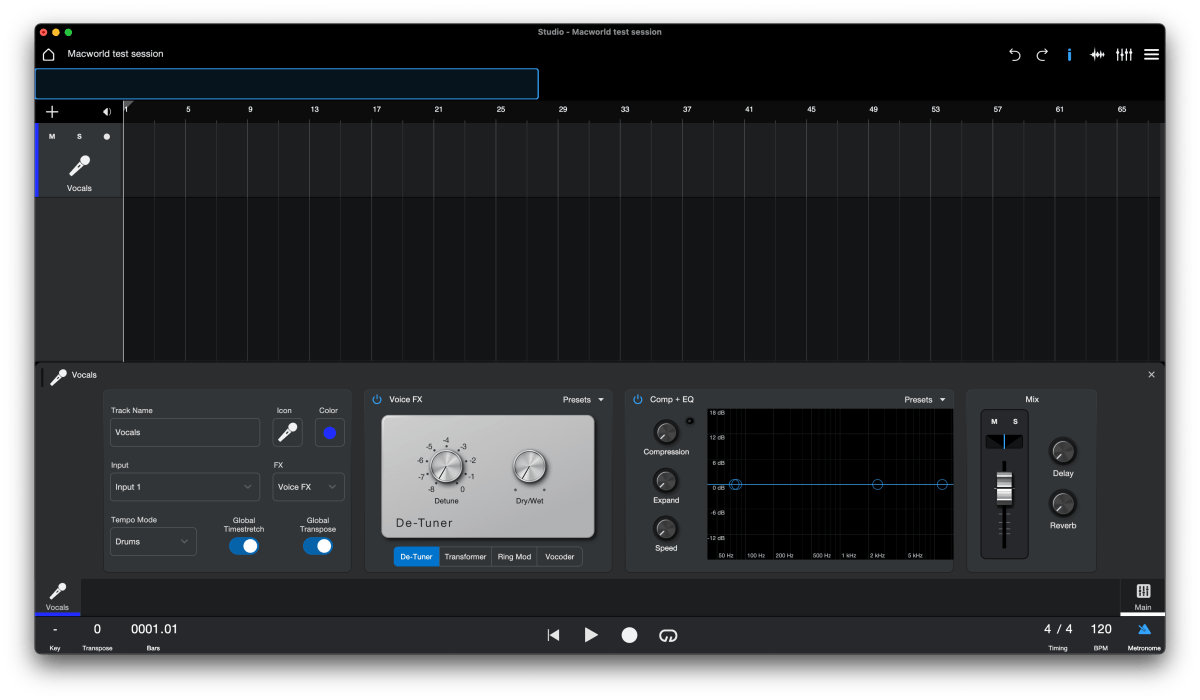
Jon L. Jacobi
You’ll be able to navigate or zoom a undertaking utilizing the overview bar, or by dragging the timeline with the mouse. I discovered the latter too delicate to zooming, so I opted for the mouse wheel, which scrolls the timeline vertically if wants be horizontally if you happen to maintain the shift key, zooms vertically utilizing the command key, and zooms horizontally with shift + command.
The monitor inspector/FX editor, audio clip editor, and mixer swap out in a big panel close to the underside of foremost window. Subsequent to the underside of the primary window is a horizontal monitor record/navigator, and on the very backside is the playback/international management bar.
Controls on mentioned bar embody play/cease, return to zero, report, loop, time signature, tempo (BPM), metronome on/off, international key and transpose, and the placement readout. Clear, easy, candy.
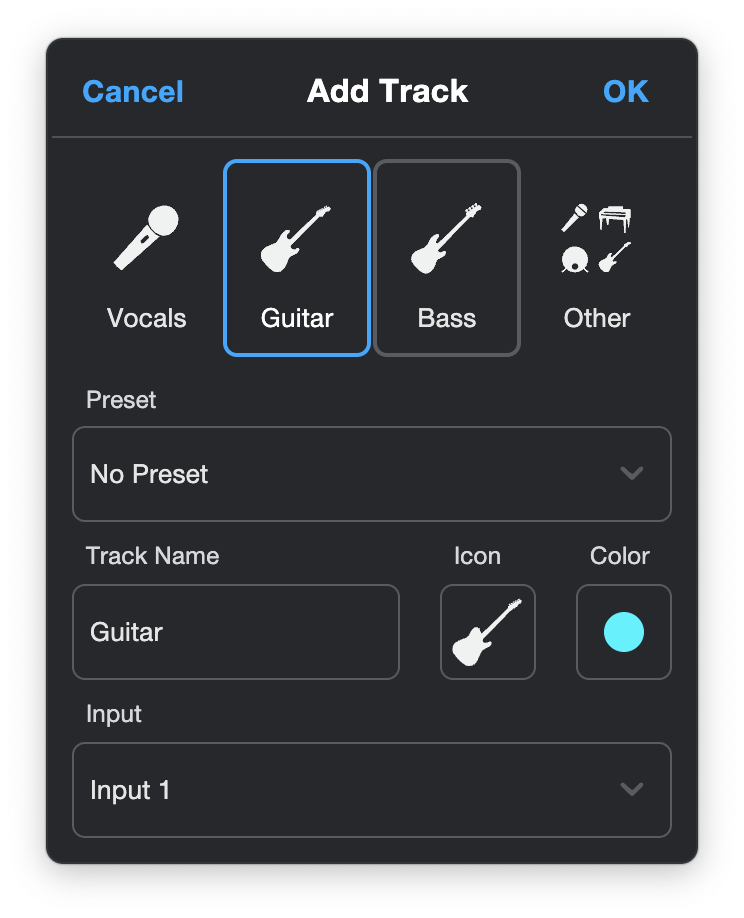
There are 4 monitor “sorts” which may be added, though they’re truly all the audio selection: Vocals, guitar, bass, and different. The distinction is the impact chain that’s added by default.
Talking of which, all the results I attempted (channel compression and EQ, international reverb and delay, and so forth.) had been prime notch. There are additionally pedal results for the amp sim that possibly inserted pre- or post-sim. Presets make it a bit simpler to get within the ballpark for the sound you need.
There are scads of keyboard shortcuts, although I didn’t take the time to be taught all of them. I didn’t actually discover them obligatory, however they at all times velocity issues up as soon as you realize them. The consumer’s information could also be discovered right here.
All in all, Fender Studio is the simplest DAW I’ve used to arrange a fundamental recording session that sounds good proper off the bat. Certainly, although it’s geared toward guitarists, you would simply use this system to report a whole band with a succesful sufficient audio interface. It acknowledged all 16 inputs on mine.
Notice that I additionally examined the iOS model. It’s a slight variation on the macOS model I’m discussing right here however functionally equal, as the opposite variations little question are.
Fender Studio: Value
Studio is free, free of charge, up for grabs,. It’s principally a loss chief/gateway/tease to introduce customers to the Fender model and its merchandise. Most particularly Studio One. It does a fairly good job in any respect that, and naturally, it’s out there in your system’s app retailer. That features x86/ARM Linux together with iOS, Android, Home windows, and macOS.
Fender Studio efficiency
With this system using the Studio One audio engine, I wasn’t anticipating any low-level glitching, and I skilled none. I recorded a bunch of tracks with and with out the enter FX and there was nary a disturbance within the timing or sign high quality. The interface as additionally extraordinarily sprightly.
Notice that I used to be utilizing a reasonably succesful M4 Max Studio with a Focusrite Scarlett 16i16 (Gen 4). As such, I didn’t expertise plenty of latency with the guitar sign. I.e., once I picked a observe there was no noticeable lag earlier than the tone exited the audio system, with or with out the amp sims within the circuit.
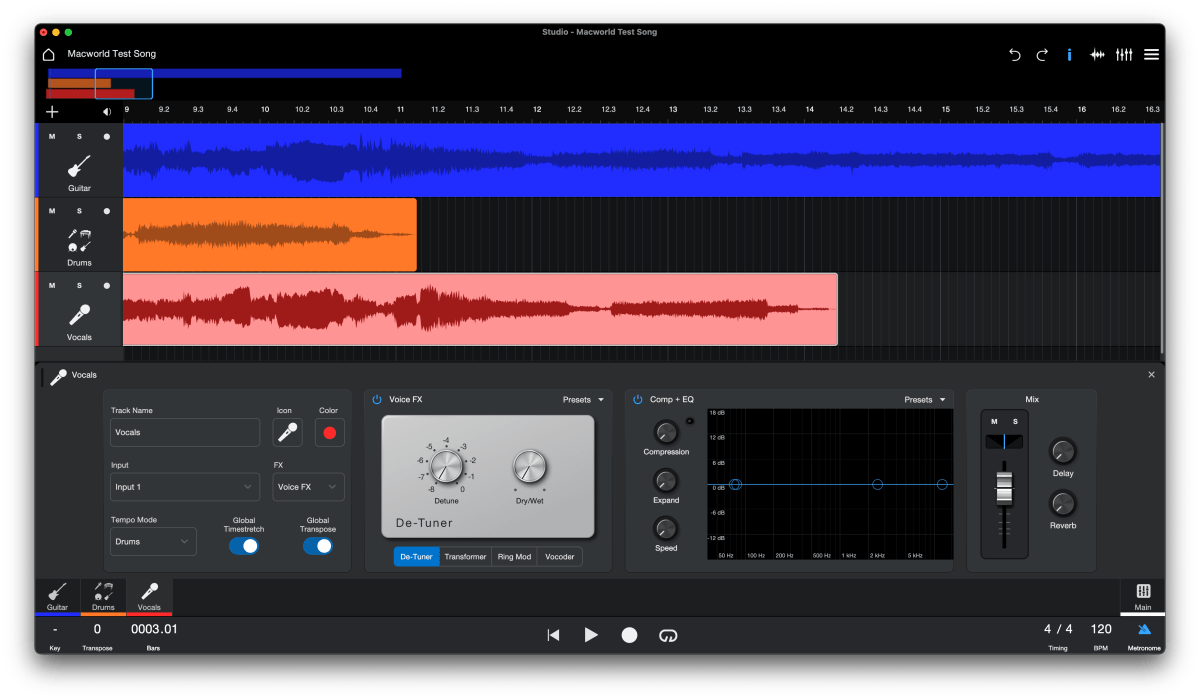
I did discover a few useful oddities with the interface earlier than the 1.1 replace that had been indicators that your entire tried-and-true Studio One audio engine is on the market beneath the hood. And that maybe the interface of us (who’ve achieved a sterling job for probably the most half) would possibly quickly add a number of the engine’s different options.
Nonetheless, it would imply that Fender has determined to not grace Studio with an excessive amount of performance. In any case, if Studio proves too succesful, customers won’t wish to improve to Studio One. Heaven forbid.
Personally, I’d love (and even pay for) a easy, easy-to-use program like Studio that features MIDI and just some extra fundamental options. One which I may use to get tasks began with out wading by means of a ton of instruments and choices that I don’t want till the enhancing part.
Again to the topic at hand. Fender Studio’s efficiency is rock stable and by no means got here near pegging something on my admittedly superior machine. I can’t vouch for the opposite platforms, however actually, audio isn’t notably taxing on any fashionable pc or gadget.
What’s Fender’s story?
You’ve most likely heard of Fender guitars and basses, or no less than mannequin names resembling Telecaster, Precision bass, Jazz bass and Stratocaster. Even when these names appear unfamiliar, assuming a life not spent inspecting the underside of a pebble, you’ve seen them utilized in live performance or on video.
Fender began life as solely a guitar and guitar amplifier firm, deriving its title from founder and extremely gifted product designer, Leo Fender. Fender is now not Leo’s child (for the reason that mid 1960’s), it’s the Fender Musical Devices Company with a wider, however fortunately nonetheless musically-focused product lineup. However I play Strats and nonetheless consider them as Leo’s infants. What can I say?
Ought to I get Fender Studio?
Completely. A free amp sim from Fender that information and let’s you play alongside? Come on now. There are a few peccadillos and various lacking DAW options, however I really loved utilizing Fender Studio and hope they no less than flesh out the audio recording capabilities. General, it’s a pleasant freebie from the parents in Fullerton and Corona (Hamburg, Germany truly, however let’s faux…). We’ll see the place it goes. Fingers crossed.


